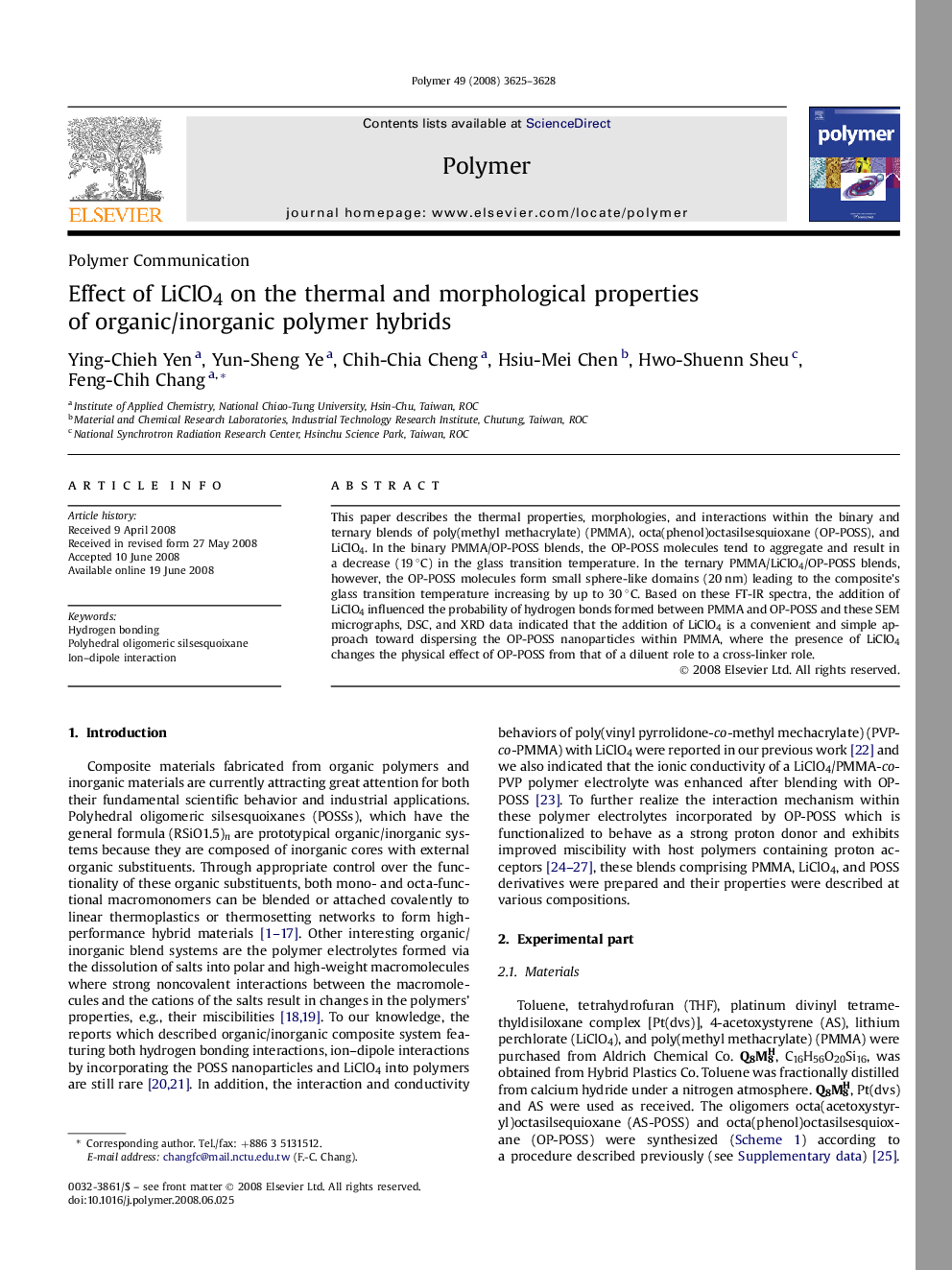| Article ID | Journal | Published Year | Pages | File Type |
|---|---|---|---|---|
| 5187063 | Polymer | 2008 | 4 Pages |
This paper describes the thermal properties, morphologies, and interactions within the binary and ternary blends of poly(methyl methacrylate) (PMMA), octa(phenol)octasilsesquioxane (OP-POSS), and LiClO4. In the binary PMMA/OP-POSS blends, the OP-POSS molecules tend to aggregate and result in a decrease (19 °C) in the glass transition temperature. In the ternary PMMA/LiClO4/OP-POSS blends, however, the OP-POSS molecules form small sphere-like domains (20 nm) leading to the composite's glass transition temperature increasing by up to 30 °C. Based on these FT-IR spectra, the addition of LiClO4 influenced the probability of hydrogen bonds formed between PMMA and OP-POSS and these SEM micrographs, DSC, and XRD data indicated that the addition of LiClO4 is a convenient and simple approach toward dispersing the OP-POSS nanoparticles within PMMA, where the presence of LiClO4 changes the physical effect of OP-POSS from that of a diluent role to a cross-linker role.
Graphical abstractDownload full-size image
